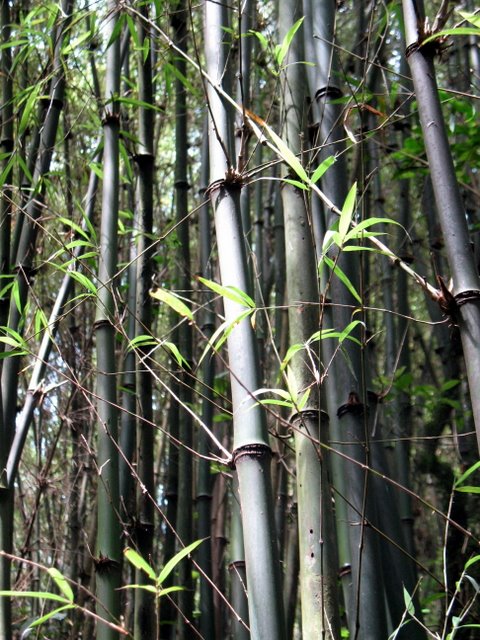|

Bamboo is an important habitat and source of food for
Mountain Gorillas, several monkeys and elephants in and around Bwindi
and Mgahinga Conservation Area (BMCA). At the same time, bamboo is a
valued and widely used forest product for rural communities surrounding
the protected area, as a strong material for weaving baskets, winnowing
trays and mats, for the construction of beehives and houses and as bean
stakes. This study into bamboo ecology may help strike a balance between
conservation and human use of bamboo from BMCA.
The study was conducted between October 1996 and
August 1997. The aim of the study was to assess and compare the
distribution, abundance, composition and use of montane bamboo in the
two parks of BMCA: Bwindi Impenetrable (BINP) and Mgahinga Gorilla
National Park (MGNP).
Aerial photographs and preliminary surveys were used
to identify the extent and type of bamboo forest. Three different cover
types were identified; Homogeneous (HOM), Mixed bamboo Dominant (MBD)
and Mixed Other tree species Dominant (MOD). To assess the abundance and
composition of bamboo, plots of 100m2 were placed along line transects
in each of the three types. A total of 40 plots on 15 transects in BINP
and 60 plots on 20 transects in MGNP were established. In each plot,
bamboo age class, diameter and internode length at breast height, bamboo
shoot consumption and other signs of damage were enumerated, for each
stem. Plot variables recorded included altitude and the tree species
associated with the bamboo. Interviews about bamboo use were conducted
using a questionnaire in 15 randomly selected homesteads which were from
six villages of the 5 traditional bamboo user parishes around the parks.
Presence/absence of bamboo gardens was also noted.
A
total of 450
households were interviewed, 270 from 3 Bwindi parishes and 180 from 2
Mgahinga ones. A total of 110 bamboo gardens were assessed, 12 from
Bwindi and 98 from Mgahinga. Size, approximate age, status of use (home
use, sale or both) and approximate yields were recorded. In addition 260
specialist bamboo product makers were interviewed about products made
from bamboo, number of bamboo stems needed for each product, the time
taken to make the product and how long the product would last. 98 were
from around Bwindi and 163 from Mgahinga.
BINP does not have homogeneous stands of
tall thick bamboo (HOM) like MGNP. The density of bamboo stems in number
per hectare (n/ha) was 5,965 in MOD and 27,045 in MBD for BINP and 5,505
- 34,475 and 41,020 in MOD, MBD and HOM respectively for MGNP.
58% of the households in Mgahinga had
bamboo gardens while only 4% of those in Bwindi had planted bamboo.
The author suggests that bamboo rhizome collection for on-farm
cultivation was to be encouraged and continued, especially in BINP where
most people around the park (96%) do not have bamboo gardens. |


